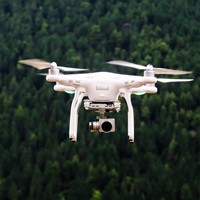Urbanization is undeniably the future for humanity, and digitalization is a pivotal and unstoppable revolution that will shape cities to be resilient and focused on the well-being of people and the environment.
According to the Smart City Expo World Congress, by 2050, the global population is projected to reach 10 billion, with an astonishing 70% of people living in cities. This means that in just 40 years, we will have constructed as many new cities as have been built throughout the entire history of humanity. This intersection of technology and urban areas presents an incredible opportunity to create a more sustainable and fair world, giving rise to fresh business models and collaborative endeavors.
The annual Smart City Expo has been held in Barcelona since 2011. That's why we are going to use this example as a case study throughout this article and dive into how they became a leading smart city in Europe.
How Barcelona Became a Smart City Role Model?
Barcelona has emerged as a leading example of a smart city, leveraging the potential of the Internet of Things (IoT). The city embarked on an IoT program in 2012, deploying responsive technologies across various urban systems, including public transportation, parking, street lighting, and waste management. This transformation has not only resulted in substantial cost savings and improved the quality of life for residents but has also positioned Barcelona as a thriving center for the IoT industry.
What Factors Drove the City to Implement IoT Technology?
During a time of economic challenges following the 2008 recession, Barcelona turned to technology to reinvent itself. Led by Mayor Xavier Trias, the city formed a dedicated team called Smart City Barcelona, which focused on integrating existing projects and identifying new opportunities to enhance services for the city's people and businesses. They identified key areas for intervention, such as transportation, water, energy, waste, and open government, and initiated multiple programs encompassing a wide range of projects across urban systems.
Barcelona's successful implementation of IoT systems was made possible by its extensive fiber optic network, which was established three decades ago and now covers 90% of homes. This network serves as the backbone for integrated city systems and provides internet connectivity to residents and visitors. Additionally, it enables citywide WiFi access, with the number of hotspots increasing and doubling the number of WiFi users since 2013.
Water, Energy, and Waste Optimization
Barcelona uses IoT smart city technology to effectively manage energy, waste, and water consumption as well as reduce noise. For example, the city has implemented smart meters and sensors in buildings to monitor and optimize energy usage, allowing for efficient energy management.
The city also harnessed the fiber network to deploy individual IoT sensors used to monitor water usage, detect leaks, and manage irrigation systems, promoting water conservation and ensuring efficient water management throughout the city. For instance, the implementation of 20,000 smart meters to monitor and optimize irrigation and water levels in parks led to a 25% increase in water conservation, saving around $555,000 annually.
Additionally, IoT technology is employed to monitor waste levels in garbage bins, encouraging optimized waste collection routes and reducing unnecessary pickups. Innovative features like interactive digital bus stops, sensor-guided parking, and energy-efficient smart lampposts were introduced, contributing to reduced congestion, lower emissions, and energy savings.
How Does the City Manage Its Data?
To manage the vast amount of data generated, Barcelona developed the Sentilo platform, an open-source system that allows efficient data management and sharing with citizens and city workers. The Sentilo platform in Barcelona connects a network of 18,000 active sensors within the city. These sensors monitor various aspects, including weather conditions, electricity usage, water supply, air quality, and environmental noise.
The IoT initiatives in Barcelona have delivered significant benefits, including substantial cost savings in water and parking revenues, the creation of thousands of new jobs, and improved energy efficiency. The city's commitment to smart urban infrastructure has not only transformed governance but has also enhanced the overall quality of life for residents, workers, and visitors.
Barcelona has emerged as a global example for cities in the field of data-driven governance. The city has enthusiastically adopted open data projects like the City Operating System ensuring that information is readily available to the general public. As a result of these open data initiatives, Barcelona has witnessed the growth of various smart city applications and services, spanning from tools for urban planning to platforms that provide real-time information.
Challenges and Concerns Linked to Building Smart Cities
Security Loopholes
The broad spectrum of security risks associated with smart cities includes both individual fraudulent activities, such as hacking payment portals, and larger cyber-physical risks like malfunctioning traffic light cameras that could potentially cause accidents. There is also the concern of nation-state actors sabotaging an entire city's operations. Furthermore, the interconnected nature of smart systems means that any vulnerability within the infrastructure can pose a threat to the entire system's security, not just a single device.
Additionally, smart cities face governance challenges, as there is often a lack of clearly defined roles and responsibilities regarding security and risk management. Unlike corporate environments where specific security positions exist, smart cities within municipalities usually lack such clarity, leading to uncertainty in addressing security concerns effectively.
To mitigate potential threats, the NCC Research group, led by Matt Lewis, has developed "A Blueprint for Secure Smart Cities." This blueprint emphasizes the importance of incorporating robust security measures and conducting rigorous testing throughout the design and implementation stages of smart city technologies. It also highlights the need for data protection practices that prioritize consent and fair use, considering the potential privacy implications for citizens.
Where Does the Energy Come From?
Building smart cities raises concerns regarding energy consumption and e-waste. The interconnected technologies utilized in smart cities, such as sensors, data centers, and communication networks, consume substantial energy, placing higher demands on power grids and potentially resulting in environmental repercussions.
The integration of advanced technology in smart cities brings about a higher demand for energy, which, in turn, puts strain on existing energy infrastructure and adds pressure to explore alternative energy sources.
Accurately measuring energy consumption in smart cities poses a challenge. It requires local and real-time measurements, starting from individual devices and machines. With the widespread use of sensors and devices in smart cities, obtaining precise measurements becomes difficult. Consequently, identifying areas where energy-saving measures can be effectively implemented becomes a challenge.
Furthermore, the lack of standardization in smart city technology hampers its full potential. Currently, there are no standardized practices and technologies across different smart cities. This absence of uniformity makes it difficult to compare and evaluate energy consumption patterns among cities.
Conclusion
The future of smart cities lies in the seamless integration of technology and urban living. As the global population continues to urbanize, digitalization and the Internet of Things (IoT) offer tremendous opportunities to create sustainable and equitable cities. Barcelona has emerged as a leading example of a smart city, leveraging IoT technology to manage energy, waste, and water consumption effectively. By implementing smart meters, sensors, and IoT systems, Barcelona has achieved significant cost savings, improved quality of life, and positioned itself as a thriving center for the IoT industry. However, challenges such as security loopholes, energy consumption, and the lack of standardization remain. Addressing these challenges will be crucial to unlocking the full potential of smart cities and creating a future where technology and urban living harmoniously coexist.











 Angry Nerds (Poland)
Angry Nerds (Poland) Angry Nerds (USA)
Angry Nerds (USA) Angry Nerds (Canada)
Angry Nerds (Canada)



